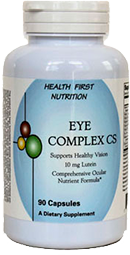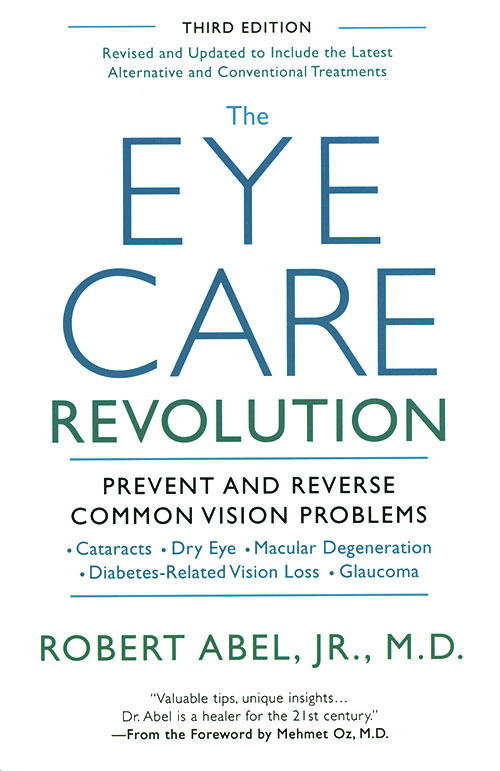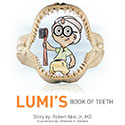-
What We See and What We Don’t
The eye is a fabulous organ but sees only a small amount of radiation around the earth. We see between 400 and 700 nanometers (nm), the colors blue through red. We are neither able to see the toxic short wavelengths (cosmic rays, gamma radiation and x-rays) nor can we see the harmless long wavelengths (infrared, microwave, radio and television). However, sometimes these long wavelengths can see us! -
Two choices for cataract therapy
Traditionally eye doctors tell their patients that they have “some” cataracts. This may refer to the earliest traces of haze in the crystalline lens of the eye or to a significant opacity, which is visually debilitating. Well, there are two approaches to cataracts that are progressing. A 2013 study from Australia documented that people with cataracts who had undergone cataract surgery were 40% less likely to die from any... -
February AMD Month
 We have an aging demographic in the developed world, so we can expect more people will have aging vision. But that doesn't have to happen! It is a good time to take inventory of your eyes and vision. Let's start by recognizing the four major reasons that threaten our sight.
We have an aging demographic in the developed world, so we can expect more people will have aging vision. But that doesn't have to happen! It is a good time to take inventory of your eyes and vision. Let's start by recognizing the four major reasons that threaten our sight.
-
Device Offer Partial Vision for the Blind
 The first of the new high-tech treatments for patients with AMD, Retinitis Pigmentosa and Stargardt's Disease has been approved in the US. The Retinal Implant will restore partial sight to those who have lost central vision. The other two procedures, Stem cell therapy and Corneal Microstimulation are in the offing. Stay tuned for the latest news and click the...
The first of the new high-tech treatments for patients with AMD, Retinitis Pigmentosa and Stargardt's Disease has been approved in the US. The Retinal Implant will restore partial sight to those who have lost central vision. The other two procedures, Stem cell therapy and Corneal Microstimulation are in the offing. Stay tuned for the latest news and click the...
-
Investing in Eyeglasses in Poor Nations Would Boost International Economy
 Eliminating the worldwide shortage of eyeglasses could cost up to $28 billion, but would add more than $200 billion to the global economy, according to a study published last month in the Bulletin of the World Health Organization.
The $28 billion would cover the cost of training 65,000 optometrists and equipping clinics where they could prescribe eyeglasses, which can now...
Eliminating the worldwide shortage of eyeglasses could cost up to $28 billion, but would add more than $200 billion to the global economy, according to a study published last month in the Bulletin of the World Health Organization.
The $28 billion would cover the cost of training 65,000 optometrists and equipping clinics where they could prescribe eyeglasses, which can now...
-
Optical Coherence Tomography (OCT)
 OCT is break-through technology, which will enable ophthalmologists and other neuroscientists to detect abnormalities in the retina, optic nerve and the brain. A harmless laser generates light waves of 850 nanometers, which scan the retina in thousands of bursts per second. The instrument can measure local or diffuse disease in blood vessels, one-cell tissue layers and the optic nerve. These...
OCT is break-through technology, which will enable ophthalmologists and other neuroscientists to detect abnormalities in the retina, optic nerve and the brain. A harmless laser generates light waves of 850 nanometers, which scan the retina in thousands of bursts per second. The instrument can measure local or diffuse disease in blood vessels, one-cell tissue layers and the optic nerve. These...
-
The Nature of Man
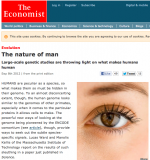 Particularly human...isn’t it interesting with all the genetic studies that the eye, once again, becomes most important? Dr. A feels genetic therapy will one day replace drugs in treating cancers and other chronic diseases.
Particularly human...isn’t it interesting with all the genetic studies that the eye, once again, becomes most important? Dr. A feels genetic therapy will one day replace drugs in treating cancers and other chronic diseases.
-
Closing Eyes Briefly After Verbal Learning Boosts Memory and Improves Learning
 Here is an interesting article about embedding a visual or oratory image in your brain. Instead of closing your eyes and thinking about it for 10 minutes, do so for 10 seconds.
Here is an interesting article about embedding a visual or oratory image in your brain. Instead of closing your eyes and thinking about it for 10 minutes, do so for 10 seconds.
-
New Tricks for Old Diseases
 You should always have a menu of choices, even if they include drops, laser or surgery. Even in glaucoma, we would say there are several less invasive and more natural options. Glaucoma illustrates the fact that there may always be less invasive and more natural options. The following are some of these options.
You should always have a menu of choices, even if they include drops, laser or surgery. Even in glaucoma, we would say there are several less invasive and more natural options. Glaucoma illustrates the fact that there may always be less invasive and more natural options. The following are some of these options.
-
Three Blind Mice
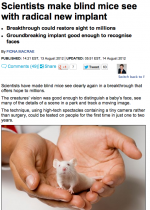 Three blind mice,
See how they run
They were just fitted with a new device,
and their life has just begun!
Three blind mice,
See how they run
They were just fitted with a new device,
and their life has just begun!
Blog
- Home
- Archive by Category "Blog" (Page 3)

